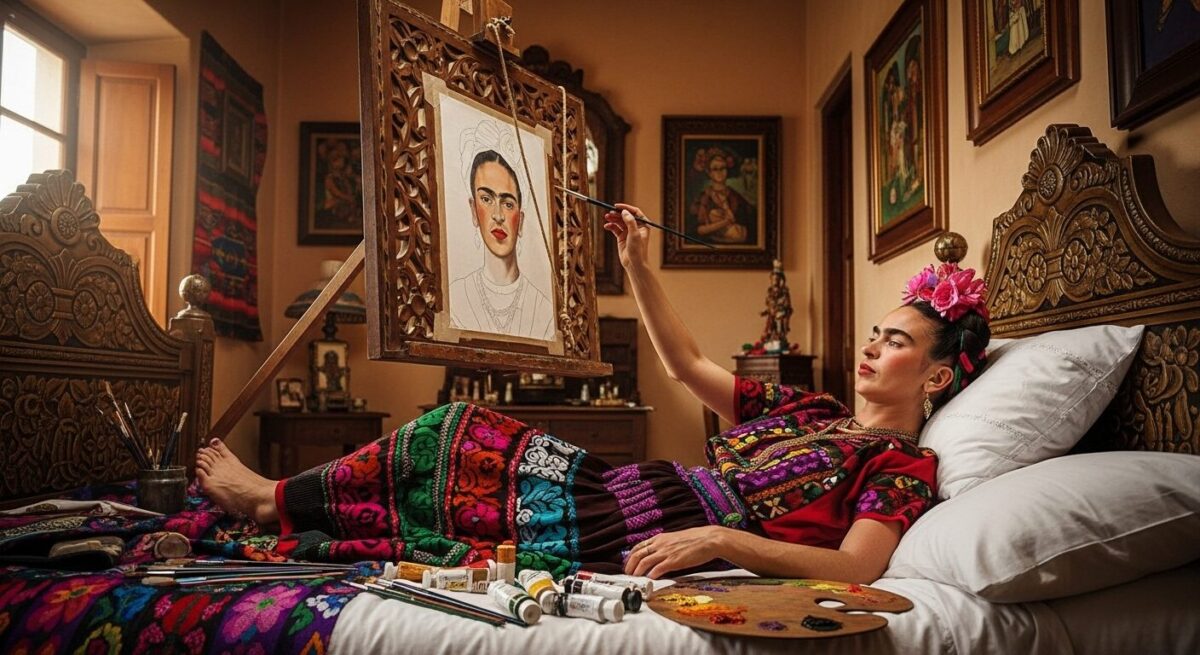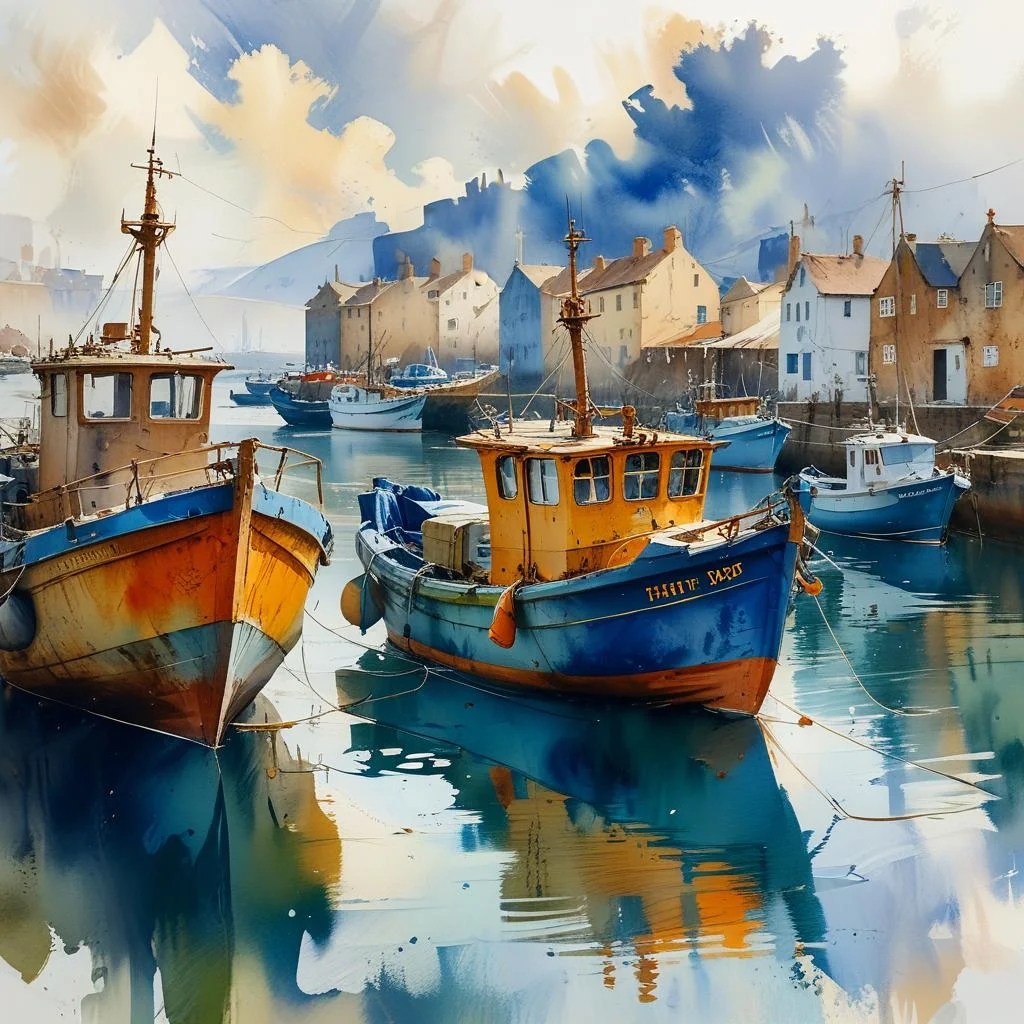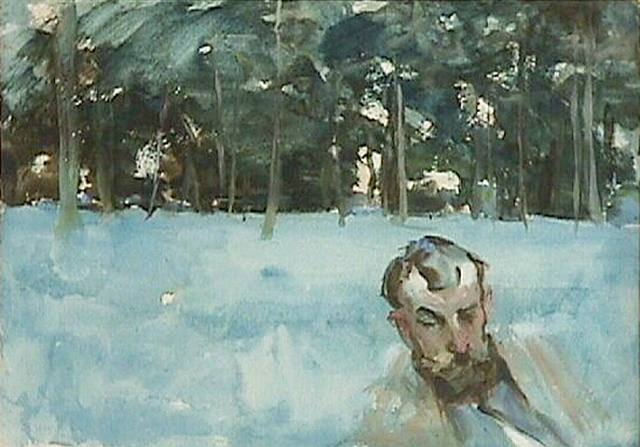Frida Kahlo. You’ve probably seen her face on posters, t-shirts, and even coffee mugs. With her iconic unibrow, bold style, and piercing gaze, she’s one of the most recognizable artists of all time. But Frida Kahlo was so much more than a famous painter. She was a revolutionary, a trailblazer, and a true Frida Kahlo feminist icon. In a time when women were expected to be seen and not heard, Frida used her art and her life to challenge the rules and redefine what it meant to be a woman. This article will explore how Frida Kahlo, through her incredible strength, unapologetic art, and rebellious spirit, became a powerful symbol of female empowerment that continues to inspire millions around the world.
Key Points: Frida Kahlo as a Feminist Icon
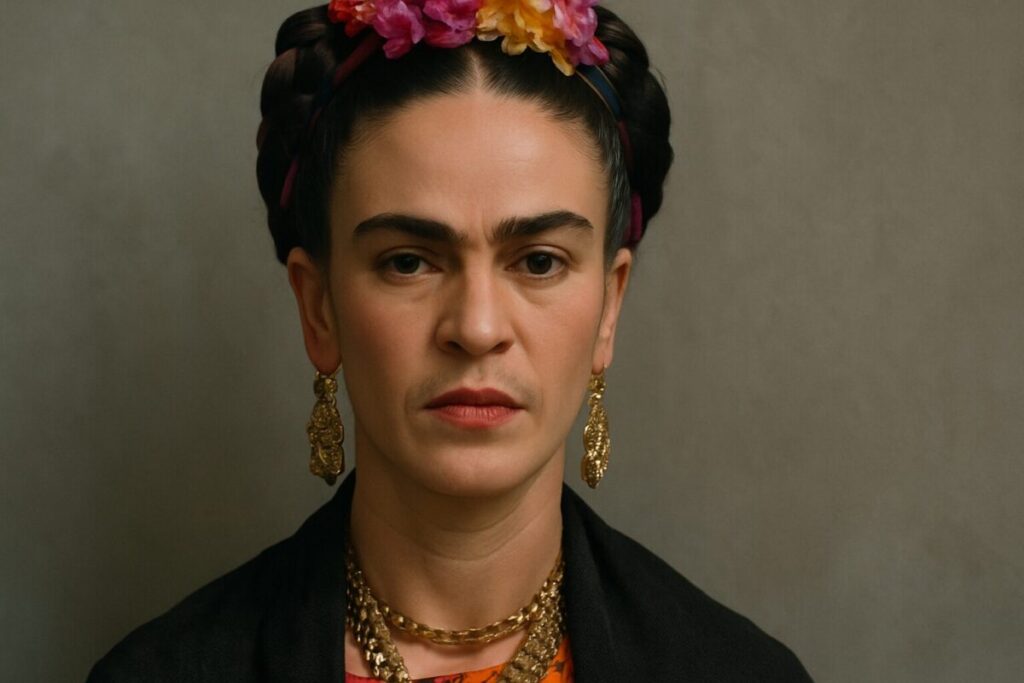
- She painted her own reality: Frida’s art was deeply personal, exploring her physical and emotional pain, her experiences with marriage, miscarriage, and her own identity. She wasn’t afraid to show the raw, unfiltered truth of being a woman.
- She defied beauty standards: Frida proudly embraced her natural features, including her famous unibrow and mustache, challenging the narrow beauty ideals of her time. Her unique and vibrant style was a statement of her independence.
- She was a political activist: Frida was a passionate communist and her political beliefs were woven into her life and art. She fought for the rights of the oppressed and used her platform to advocate for social change.
- She was openly bisexual: In a deeply conservative society, Frida was open about her relationships with both men and women, challenging traditional notions of sexuality and love.
- Her legacy inspires millions: Frida’s life and art continue to be a source of inspiration for women and marginalized communities worldwide. She is a symbol of resilience, creativity, and the power of being true to yourself.
A Life of Pain and Passion
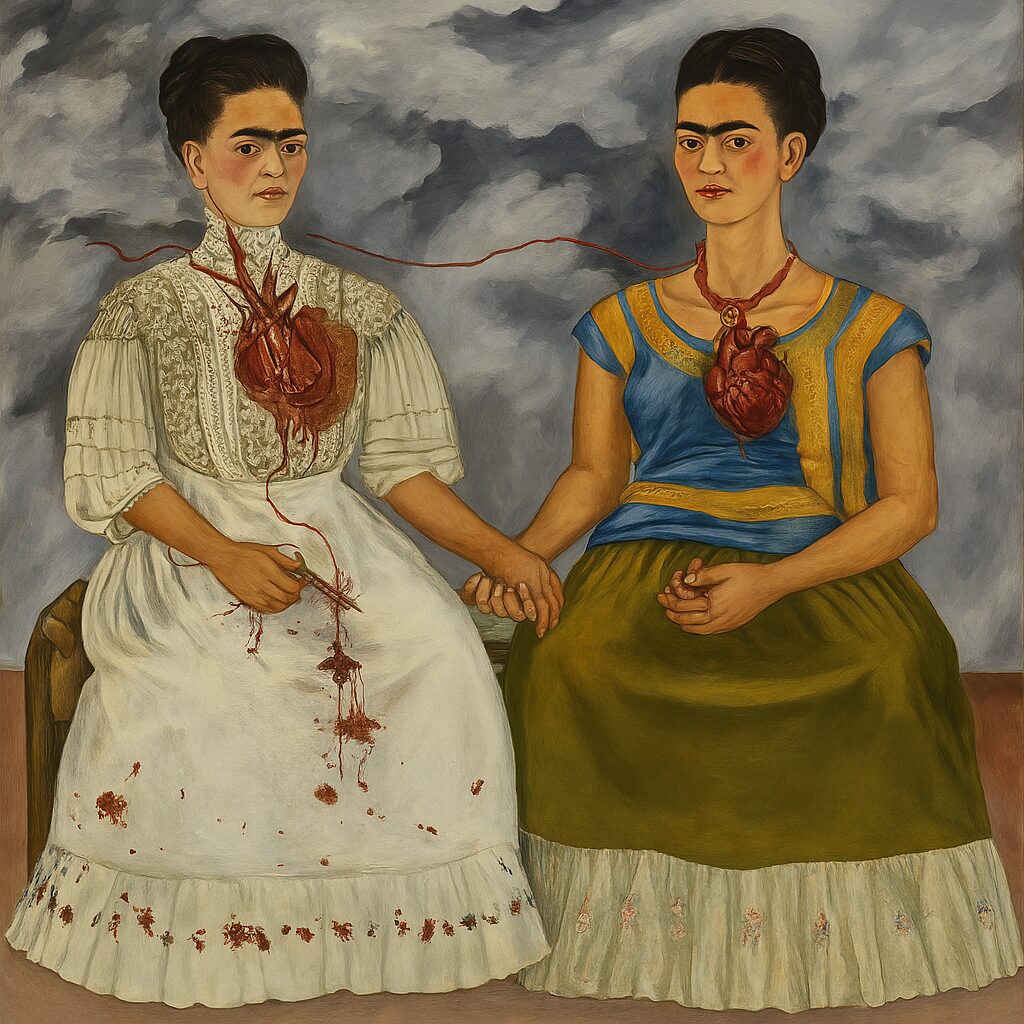
To understand why Frida Kahlo is a feminist icon, we first need to understand her life. Born in Mexico in 1907, Frida’s life was marked by immense physical and emotional suffering. At the age of six, she contracted polio, which left her with a permanent limp. Then, at eighteen, a horrific bus accident nearly killed her. She suffered multiple fractures, including a broken spinal column, collarbone, ribs, and pelvis. An iron handrail pierced her abdomen and uterus, causing injuries that would plague her for the rest of her life and prevent her from having children.
During her long and painful recovery, Frida began to paint. Her bed became her studio, and a special easel was made to allow her to paint while lying down. Her early work was heavily influenced by her experiences with pain, and she would go on to create some of the most powerful and personal art of the 20th century. Her art was a way for her to process her trauma and to explore her identity as a woman and an artist. This transformation of pain into art is a powerful testament to her resilience, a key aspect of her status as a Frida Kahlo feminist icon.
Painting Her Own Reality: The Female Gaze in Kahlo’s Art
Frida Kahlo’s art is often described as surrealist, but she herself rejected this label. She once said, “They thought I was a Surrealist, but I wasn’t. I never painted dreams. I painted my own reality.” And what a reality it was. Her paintings are filled with raw, honest depictions of the female experience, something that was virtually unseen in the art world at the time.
While many male artists of her era painted women as passive objects of beauty, Frida painted women—and most often, herself—with an unflinching honesty. She explored themes of miscarriage, childbirth, and her tumultuous relationship with her husband, the famous muralist Diego Rivera. Her self-portraits are particularly powerful. In them, she confronts the viewer with a direct, unapologetic gaze. She doesn’t shy away from her “flaws,” instead, she highlights them. For more on the evolution of this art form, you can explore the evolution of self-portraits.
| Feature | Traditional Female Portraits (by Male Artists) | Frida Kahlo’s Self-Portraits |
| Gaze | Often passive, averted, or demure. | Direct, confrontational, and self-aware. |
| Subject | Idealized beauty, often depicted as a muse. | A real woman with flaws, pain, and strength. |
| Themes | Domesticity, motherhood (in an idealized way). | Miscarriage, physical pain, identity, and personal struggle. |
| Symbolism | Often related to purity, innocence, or virtue. | Complex and personal, drawing on Mexican folklore and personal experience. |
This radical departure from the traditional male gaze is a cornerstone of her feminist legacy. Frida’s art gave a voice to the silent struggles and triumphs of women, making her a true Frida Kahlo feminist icon. To understand more about the artistic movement she was often associated with, you can read our guide on what is surrealism.
Breaking the Mold: Redefining Beauty and Identity
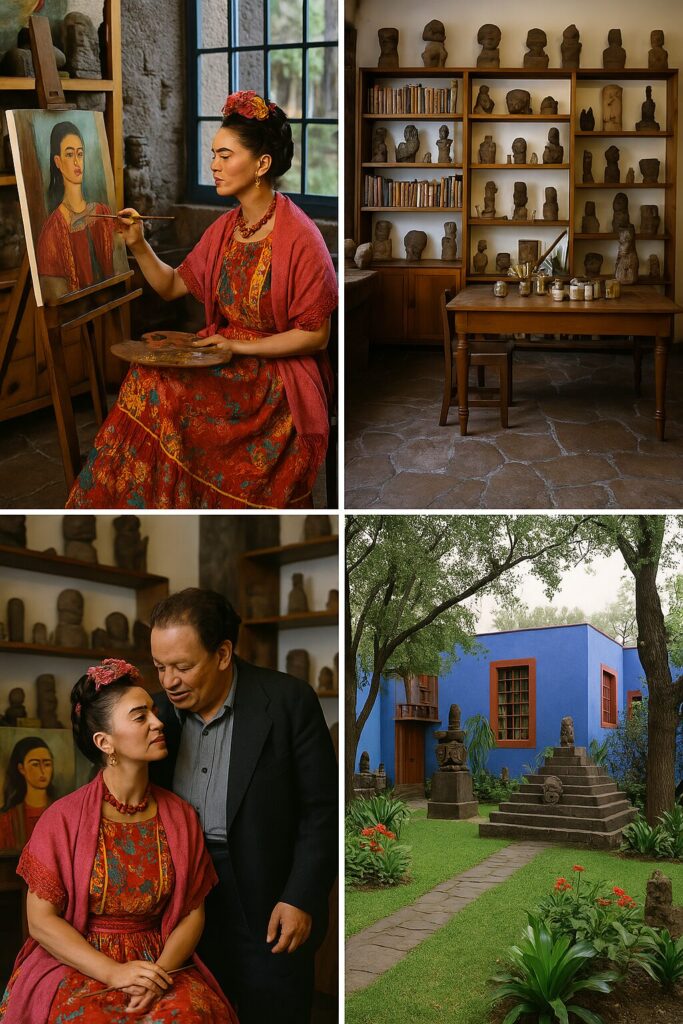
Frida Kahlo’s rebellion against societal norms extended beyond her art. She was a walking piece of performance art, using her appearance to make a statement about her identity and her politics. In an era when women were expected to conform to a very narrow standard of beauty, Frida celebrated her unique features. She accentuated her now-famous unibrow and mustache, challenging the very definition of femininity.
Her style of dress was equally revolutionary. She often wore traditional Tehuana dresses, not only as a celebration of her Mexican heritage but also as a way to conceal her physical impairments. These long, flowing dresses allowed her to move with more freedom and confidence. She also famously wore men’s suits in family portraits, a bold statement of her defiance of traditional gender roles. Famous artists and their styles often reflect the societal norms they either conform to or challenge, and Frida’s style was a clear challenge.
“I am my own muse. I am the subject I know best. The subject I want to know better.”
Frida Kahlo
This quote perfectly encapsulates Frida’s approach to her life and art. She was not interested in conforming to anyone’s expectations. She was on a journey of self-discovery, and she invited the world to witness it, flaws and all. This unapologetic self-love and radical self-acceptance are why she remains such a powerful Frida Kahlo feminist icon for people who feel like outsiders.
A Revolutionary Spirit: Kahlo’s Politics and Feminism
Frida Kahlo was not just an artist; she was a political activist. She was a lifelong member of the Mexican Communist Party and her political convictions were deeply intertwined with her personal life and her art. She and Diego Rivera were friends with Leon Trotsky, a key figure in the Russian Revolution, who they sheltered in their home, the famous Casa Azul, when he was exiled to Mexico.
Frida’s feminism was not just about personal expression; it was about fighting for a more just and equal world for everyone. She saw the struggles of women as being connected to the struggles of the working class and indigenous people. Her art often contained political symbolism, and she used her platform to speak out against oppression and injustice. By exploring hidden meanings in famous paintings, one can see how artists like Frida embed their beliefs in their work. Her life and art are a powerful example of how art for change can be a powerful force in the world.
The Legacy of a Feminist Icon
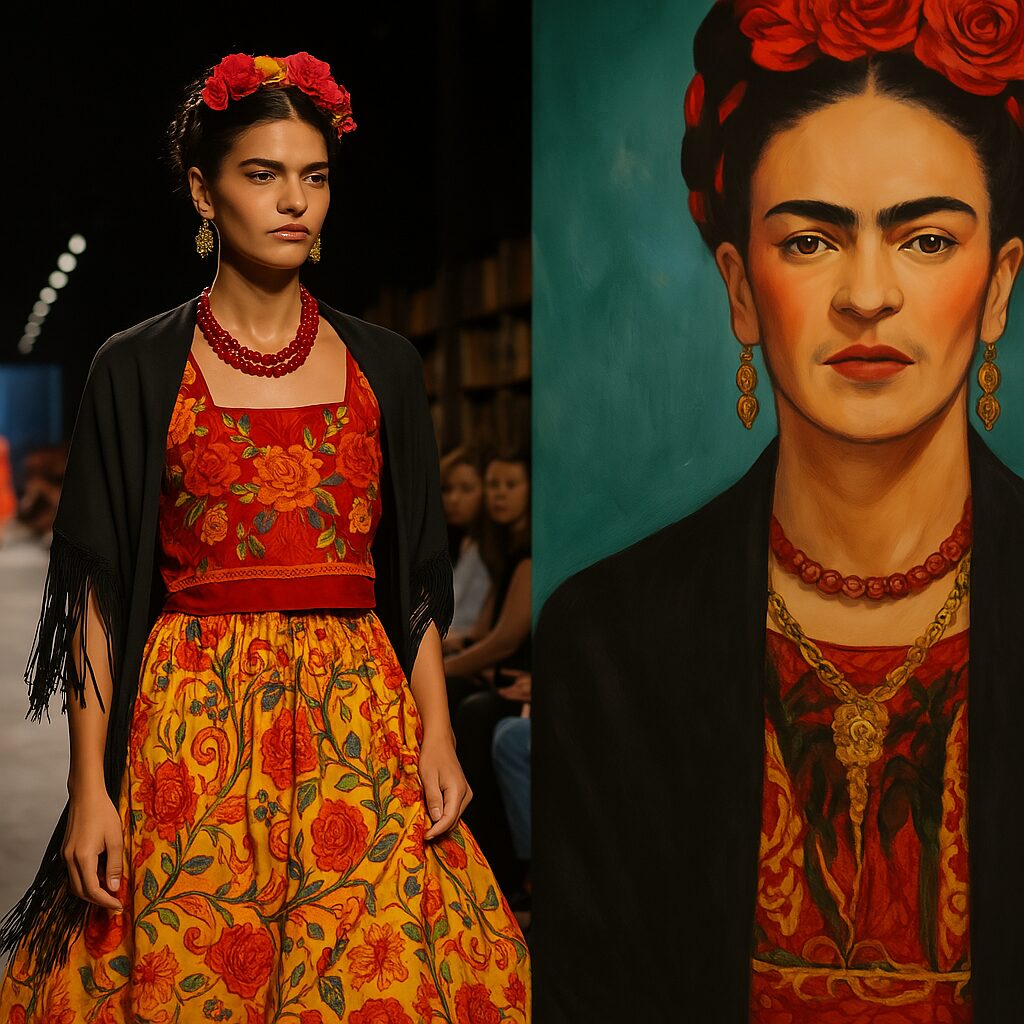
Frida Kahlo died in 1954 at the age of 47. While she was a well-known artist in her lifetime, her fame has grown exponentially since her death. Today, she is a global phenomenon, a symbol of female empowerment, and a true Frida Kahlo feminist icon.
Her influence can be seen everywhere, from the runway to political protests. Her face has become a symbol of rebellion and resilience for women and marginalized communities around the world. Why has her legacy endured? Because her story is a story of survival. It’s a story about finding strength in the face of unimaginable pain. It’s a story about the power of art to heal and to create change.
Frida Kahlo’s life and work continue to be a source of inspiration for so many. She teaches us that it’s okay to be different, that our flaws are what make us beautiful, and that we all have the power to paint our own reality. She reminds us that a woman can be both strong and vulnerable, a lover and a fighter, a muse and an artist. The journey of women in art is one of struggle and triumph, and Frida Kahlo’s story is a vital chapter in that ongoing narrative.
Frida Kahlo: A Feminist Icon – A YouTube Exploration
FAQs: Frida Kahlo Feminist Icon
Why is Frida Kahlo a feminist icon?
Frida Kahlo is considered a feminist icon for several reasons. She challenged traditional gender roles and beauty standards, openly expressed her experiences as a woman through her art, was politically active, and lived a life of unapologetic self-expression. Her work and life story continue to inspire women to be strong, independent, and true to themselves.
What did Frida Kahlo say about feminism?
While Frida Kahlo didn’t explicitly label herself a feminist in the way we understand the term today, her life and work are deeply aligned with feminist principles. She once said, “I am my own muse,” which reflects her focus on her own experiences and her refusal to be defined by others. Her art and her actions spoke louder than words, advocating for female agency and self-determination.
How did Frida Kahlo empower women?
Frida Kahlo empowered women by showing them that they could be strong, resilient, and creative in the face of adversity. She broke taboos by painting about female experiences like miscarriage and her own physical pain. Her unconventional beauty and style encouraged women to embrace their individuality. She is a powerful role model for women who want to live life on their own terms.
Was Frida Kahlo a revolutionary?
Yes, Frida Kahlo was a revolutionary in many ways. She was a political revolutionary, an active member of the Communist Party who fought for social justice. She was also an artistic revolutionary, who broke from traditional European styles to create a unique and deeply personal visual language. Finally, she was a social revolutionary who challenged the conventions of her time regarding gender, sexuality, and beauty.
Resources
- Frida Kahlo. (2023). In Wikipedia. https://en.wikipedia.org/wiki/Frida_Kahlo
- Frida Kahlo’s Influence and Lasting Impact on Society Today. (2023). Flame Tree Publishing Blog. https://blog.flametreepublishing.com/art-of-fine-gifts/frida-kahlo-impact-on-society-0
- How Frida Kahlo Broke All Conventions And Shaped Feminism. (2021). Sound of Life. https://www.soundoflife.com/blogs/people/how-frida-kahlo-broke-all-conventions-and-shaped-feminism
- Frida Kahlo: 4 Reasons Why She Is a Feminist Icon. (2023). FormFluent. https://formfluent.com/blogs/blog/frida-kahlo-4-reasons-why-she-a-feminist-icon
- Frida Kahlo, the woman who never gave up on her dreams and became an icon. (n.d.). Artika Books. https://artikabooks.com/en/frida-kahlo-woman-who-never-gave-her-dreams-and-became-icon/
- Quotes from Frida Kahlo. (2020). Denver Art Museum. https://www.denverartmuseum.org/en/blog/quotes-frida-kahlo

